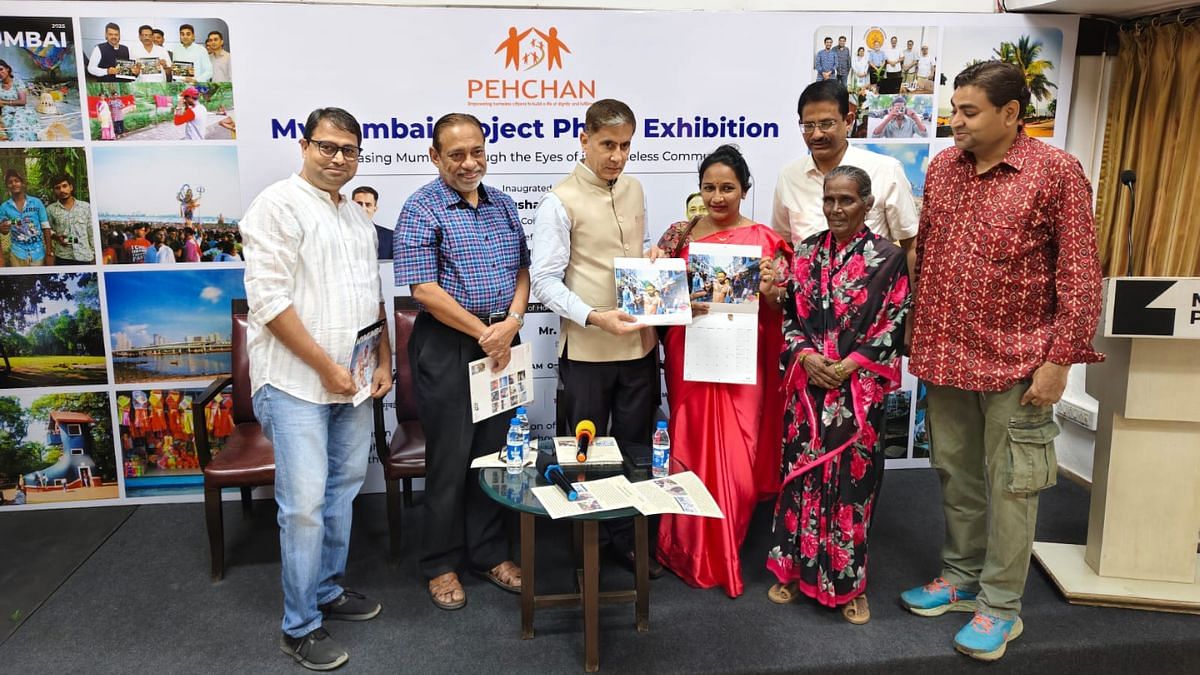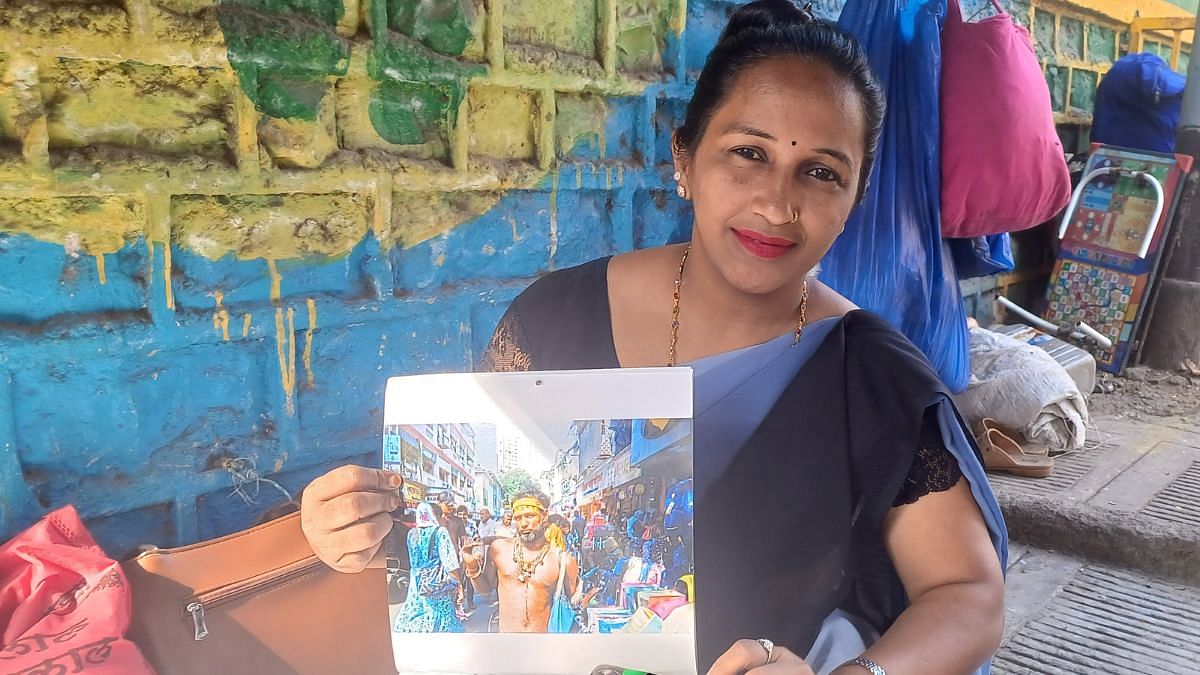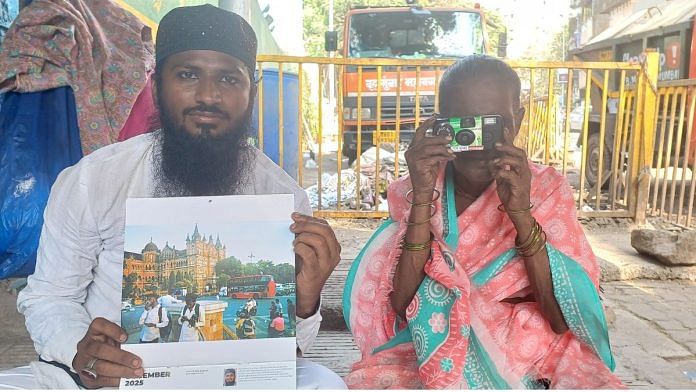Mumbai: Sheela Pawar, 56, works as a domestic help throughout the day and lives in a makeshift home of tarpaulin on a footpath next to JJ Hospital at Grant Road.
In the four decades that she has been in Mumbai—seen as little more than a statistic in the count of the city’s struggling homeless—she never imagined that she would someday get to show everyone what Mumbai looks like from her gaze, what the city means to her.
But then, one fine day, Pehchan Foundation—a non-governmental organisation that works for the welfare of the homeless—gave Pawar a camera, with which she happily went about clicking everything in the city that interested her.
Pawar’s work was part of a photography exhibition, ‘My Mumbai’, organised by Pehchan at the Mumbai Press Club on 12 February. The central theme of ‘My Mumbai’ was to showcase the city through the eyes of its most marginalised—the people who lack access to the formal housing sector and see the city rise and sleep, and everything in between, from its pavements.
According to Pehchan, the one-day exhibition saw at least 400-450 visitors in attendance, with Bhushan Gagrani, the municipal commissioner of Mumbai, as the chief guest. Gagrani was fairly surprised by the photographs and, praising the participants, said, “The photo exhibition proves that those living on the streets are capable of portraying the city in a beautiful manner, with such depth of thought. What I really like about the photographs is that you have not shown Mumbai in a negative light or focused on its dirt in any of the pictures.”
This was the second edition of the ‘My Mumbai’ exhibition. The first was held in 2024.
“Photography is a powerful medium of communication that creates awareness amongst the masses, and a story conveyed through photos resonates with people. We captured 1,107 photographs from 50 cameras altogether. Of these, the judging panel finalised 40 photographs, of which 13 were selected for the ‘My Mumbai’ calendar,” Brijesh Arya, founder of Pehchan, told ThePrint.
Also Read: Maharashtra Police file FIRs against 12 farmers for sowing banned GM crops
The inspiration behind ‘My Mumbai’

The inspiration for ‘My Mumbai’ came from a similar initiative Arya had seen in London, conducted by Café Art, a social enterprise that works with people lacking formal housing. Café Art donated 50 disposable cameras to Pehchan to train people in photography for the ‘My Mumbai’ event.
“We focused on training people of all age groups, except children, in the areas of JJ Hospital, Kamathipura, Tardeo, Mahim, Worli, Mumbai Central, and Chhatrapati Shivaji Terminus,” Arya said.
The result was a motley mix of visuals that reflect Mumbai as the melting pot that it is. There were photographs showcasing Mumbai’s old architecture, its colourful fishing villages, communities in action, and the city’s natural landscapes.
According to a 2023 survey conducted by the Brihanmumbai Municipal Corporation (BMC), there are around 40,000 homeless citizens residing in the city of dreams, with only 16 night-time shelters built, accommodating up to 2,000 people.
Arya said there are various government schemes for skill-based vocational training, but none focusing on professional endeavours like photography.
“The government should focus on making resources more accessible for creative professions, which would improve livelihood prospects for people in the informal sector. If the government provides support, we are ready to put in the training and effort. Sensitising officials, authorities, and policymakers about the socio-economic conditions of the people is the need of the hour,” he said.
The view from Mumbai’s streets
Sitting in her makeshift home on the footpath near JJ Hospital, sipping tea, Sheela opened up to ThePrint about how she gradually became comfortable operating a camera. The more photos she clicked, the more eager she became to explore the city in different lights.
“Passing moments, lanes, people, and the traffic of Mumbai kept me interested throughout the photography process,” said Sheela, who was trained a few times before venturing into the streets and had the camera with her for four days.
Originally from a village near Pune, Sheela came into contact with Pehchan nearly 10 to 12 years ago when she had no formal documentation after the death of her husband. For years, this had been the biggest impediment to her entering Mumbai’s formal housing system. Sheela, who has now managed to obtain formal documentation, is looking forward to getting a permanent house through one of the government schemes.
She was among the few people, pictures captured by whom were displayed at the exhibition.
“I felt immense joy when I first held a camera and photographed Mumbai. When I interacted with the commissioner, he encouraged me to keep clicking photos. If we receive government support, I would like to take more pictures of Mumbai, as it makes me very happy,” she added.
Sheela’s daughter, Sunanda, who lives with her four children in rented accommodation in Vasai, clicked a photograph capturing a Chabukwala, a member of a denotified tribe.

Speaking to ThePrint, she said, “I was passing through Dadar market after my housekeeping shift at the hospital. I suddenly saw this person standing alone, engrossed in his thoughts. I liked the visual and instantly clicked the man without asking him to pose.”
She chuckled and said, “It was one of those rare moments when the man looked into my camera, and I instantly clicked his picture. But I apologised to him later.”
Sunanda has applied for a house under the Mahatma Gandhi Path Kranti Yojana, the state government’s rehabilitation scheme, but has yet to receive any response. She said, “Even a person living on the footpath is capable of making progress, as seen in the photo exhibition. However, if only everyone could shed their prejudices and biases towards us, things would improve. Authorities constantly vandalising our meagre belongings and calling us illegal cause major problems for us. Having a home of my own is a huge aspiration for me.”
Firoz, a 28-year-old taxi driver, had lived on JJ Hospital Road in Mumbai since birth until last year, when he moved into rented accommodation in Chembur with his family of five.
Speaking about his photo that was featured in the exhibition, Firoz said, “I photographed CSMT station, as it is one of the best heritage buildings in Mumbai. With the emergence of new private cement structures in the city and the depletion of public spaces and buildings, I find the old charm of South Mumbai quite attractive. When I pointed my lens towards CSMT station, I realised that in a crowd of thousands, no one cares about your religion.”
Firoz, who is the sole breadwinner of his family, said, “What I like about the city is that everyone can take up something and survive here. However, I dislike the deep, invisible differences between the rich and the poor.”
(Edited by Radifah Kabir)
Also Read: Trump, Biden, Arnab Goswami, or Maharashtra police — who is the real winner on TV?







amazing!!!!!!!!!!